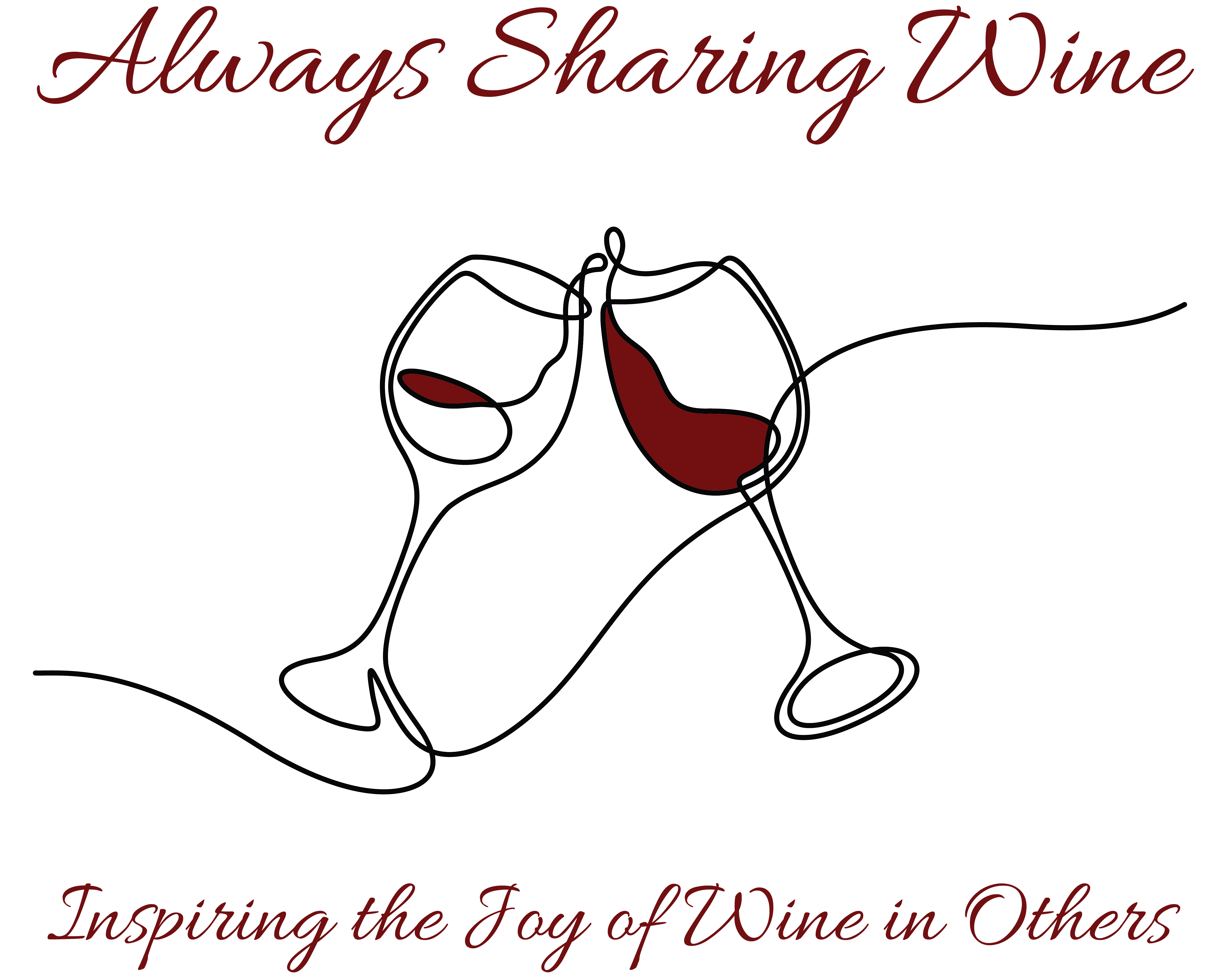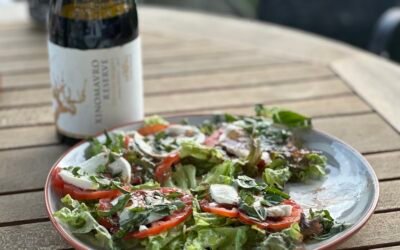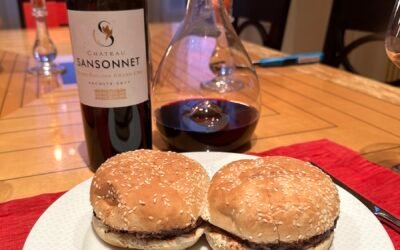
Heart-shaped arrangement of legumes symbolizing love and nutrition via Napa Valley Life.
The new year is approaching, a time when people take stock of their lives and well-being. Some may choose to make resolutions to lose weight, exercise more, spend more time with family and friends, and get more sleep. What if instead of making promises to change that are often short-lived, there was a way to improve health and longevity by embracing a new way of living? This year, choose to embrace the lifelong benefits of a Blue Zones and Mediterranean lifestyle.

Farmer holding fresh vegetables in a basket via Napa Valley Life.
The Blue Zones Lifestyle
The Blue Zones lifestyle is a product of research and travel by writer Dan Buettner and a team of National Geographic longevity researchers who wanted to determine where populations had the greatest longevity in the world. Their findings revealed that people with a purpose in life, a close circle of friends, engaged in daily physical activity, ate a primarily plant-based diet, and drank a modest amount of red wine seemed to live longer, up to six years longer than elsewhere.
In 2008, Dan published his first of many books, The Blue Zones. It detailed the locations and lifestyles of individuals who lived productive and healthy lives well into their ninth or tenth decade. The term Blue Zone comes from the color of the ink the team used to circle the areas on the globe with the highest life expectancy, and it included populations in Greece, Italy, Japan, Costa Rica, and Loma Linda, California. Ultimately, Dan and the team of demographers and researchers found that all blue zone areas share nine specific lifestyle habits that they call the Power of 9 (see below).
These are the key ingredients to what Dan and his colleagues consistently saw across the communities with healthy aging.
Over twenty years later, the Blue Zones lifestyle has grown into a community-based population health intervention program called Project Blue Zones. Co-founded by Ben R. Leedle, Jr. and Dan Buettner, Project Blue Zones focuses on community transformation programs that lower healthcare costs, improve productivity, and enhance community health. In the United States, over 75 communities, including Upper Napa Valley, are certified by the Blue Zones Project.
Summary of Blue Zones Power 9
Lifestyle Habits of the World’s Healthiest, Longest-Lived People
- Move Naturally: The world’s longest-lived people live in environments that constantly nudge them into moving without thinking about it, like doing yard and housework or walking to the post office or market.
- Purpose: Having a purpose in life. The Okinawans call it “Ikigai,” meaning “why I wake up in the morning.” A sense of purpose is worth up to seven years of extra life expectancy.
- Downshift: Stress leads to chronic inflammation, associated with every major age-related disease. The world’s longest-lived people have routines to shed that stress. They manage stress by napping, praying, and gathering with friends.
- 80% Rule: “Hara hachi bu”– the Confucian mantra to stop eating when the stomach is 80 percent full. The 20% gap between not being hungry and feeling full could help maintain a healthy weight.
- Plant Slant: Beans, including fava, black, soy, and lentils, are the cornerstone of most centenarian diets. Meat is eaten on average only five times monthly. Serving sizes are 3-4 oz., about the size of a deck of cards.
- Wine @ 5: People in all blue zones (except Adventists) drink alcohol moderately and regularly. Moderate drinkers outlive non-drinkers. They drink 1-2 glasses of red wine daily, with friends and usually with food.
- Belong: All but five of the 263 centenarians interviewed belonged to some faith-based community. Denomination does not seem to matter. Research shows that attending faith-based services four times monthly will add 4-14 years of life expectancy.
- Loved Ones First: Successful centenarians in the blue zones put their families first. This means keeping aging parents and grandparents nearby or in the home. They commit to a life partner and invest in their children with time and love.
- Right Tribe: The world’s longest-lived people chose or were born into social circles that supported healthy behaviors; Okinawans created ”moais”–groups of five friends committed to each other for life. The social networks of long-lived people have favorably shaped their health behaviors.Visit BlueZones.com for more details.

Mediterranean Freekeh Bowl Grilled Vegetable with lamb. Photo courtesy of Oldways.
The Mediterranean Lifestyle
The Mediterranean diet is regarded as one of the healthiest ways to eat. Based on the traditional cuisine and habits of countries bordering the Mediterranean Sea, it is also considered as much a lifestyle as it is a way of eating. According to the International Journal of Environmental Research and Public Health in 2019, interest in the Mediterranean diet surged when medical studies observed that the rate of heart disease in countries such as Greece and Italy was lower than in other regions worldwide. The major contributors to these results were quickly identified as the right balance of healthy food and a slower, quality pace to each day.
The Mediterranean diet has no specific definition and is similar to the Blue Zones diet. The basics of following a Mediterranean diet involve eating vegetables, fruits, and whole grains every day, consuming fish, poultry, and eggs only two to three times per week, keeping to a small weekly consumption of dairy products such as cheese, butter, and milk, and significantly limiting the intake of red and processed meat.
There is also red wine. Drinking a glass of red wine has been associated with a lower incidence of cardiovascular disease due to the naturally occurring polyphenols that protect the body’s cells from harmful free radicals. Even with this potential benefit, though, it is essential to remember that consuming alcohol has its risks and should be based on your personal health status. The American Heart Association recommends that if you do not drink, do not start.
Paired with healthy eating, exercise and relaxation are also integral to the Mediterranean diet and lifestyle. Midday and evening meals are usually savored, not rushed, while friends and family enjoy each other’s company. In much of Europe, restaurants close from 3 to 7pm so families and friends can gather, relax, and eat a healthy meal—a custom that the United States could benefit from adopting. After eating, families often go for a short walk together to digest their meals before returning to work.
Not all Mediterranean cultures embrace this pause in productivity, but much can be learned from it. As staring at screens and being online 24/7 now dominates so much of life, taking time with good friends and family, eating mindfully, and getting a small amount of exercise and “downtime” each day could improve overall health no matter where one lives.
Making a lifestyle change can be daunting. Start by making one or two changes at a time to your diet or daily routine. Find a friend or two to join you in embracing a new lifestyle. The Oldways organization is a food and nutrition nonprofit that provides information, resources, recipes, events, and more to help people live healthier lives through cultural food traditions, including the Mediterranean diet. // www.oldwaysPT.org
See below for guidance on implementing a healthier lifestyle that can be maintained for life.
Embrace a Mediterranean Lifestyle
Food and Drink: The Basics
Every day: Vegetables, fruits, beans, nuts. Whole grain bread, cereal, rice, and pasta.
Two to Three times per week: Fish, poultry, eggs.
Moderately: Dairy products such as cheese, butter, and milk. Use mostly 1-2% fat.
Limit: Red meat and processed meats.
Wine: A 5-oz glass of red wine is optional and should be consumed only if wine is currently a part of the diet.
Suggestions for Implementation
- Slowly add beans, whole grains, and legumes to the diet. Reduce red meat and cold cuts.
- Cook one vegetarian meal a week and increase it to two or more over time.
- Switch out whole milk cheeses for low-fat ricotta, feta, goat cheese, and halloumi.
- Use olive and avocado oil for cooking and baking.
- Instead of white rice and pasta, try couscous, farro, millet, quinoa, polenta, and brown rice.
- Use herbs and spices to add exciting flavors and dimension to meals.
Exercise: Move daily for 30 minutes and mix it up with different daily activities.
- Schedule a regular walk with a companion or friend.
- Do housework: Vacuum, do laundry, wash windows, change the sheets, do dishes.
- Run, bike, play tennis, or take up Pickleball. Join a gym or YMCA that is close to work or home.
- Get a stand-up desk or treadmill desk.
- Take a window shopping walk at the local mall.
Community: Plan regular interaction with others over meals, shared interests, or through exercise.
- Form a Mediterranean diet dinner club, cook meals together, and try new foods and recipes.
- Meet up at a plant-based Mediterranean restaurant and then take a walk.
- Join a book, investment, bridge, walking, or other type of club that meets regularly.
- Volunteer at a local food pantry, town library, or civic organization.
Rest: Plan quiet time into your day.
- Shut off all electronics for at least 30 minutes.
- Read a book or magazine.
- Do a puzzle.
- Take a short 15-minute nap.
- Meditate.
This article was originally written for Napa Valley Life Magazine, and was published online on December 31, 2024. See the original article here: https://napavalleylife.com/the-new-year/. See all of Susan’s previously published articles here: https://alwayssharingwine.com/tag/previously-published.



